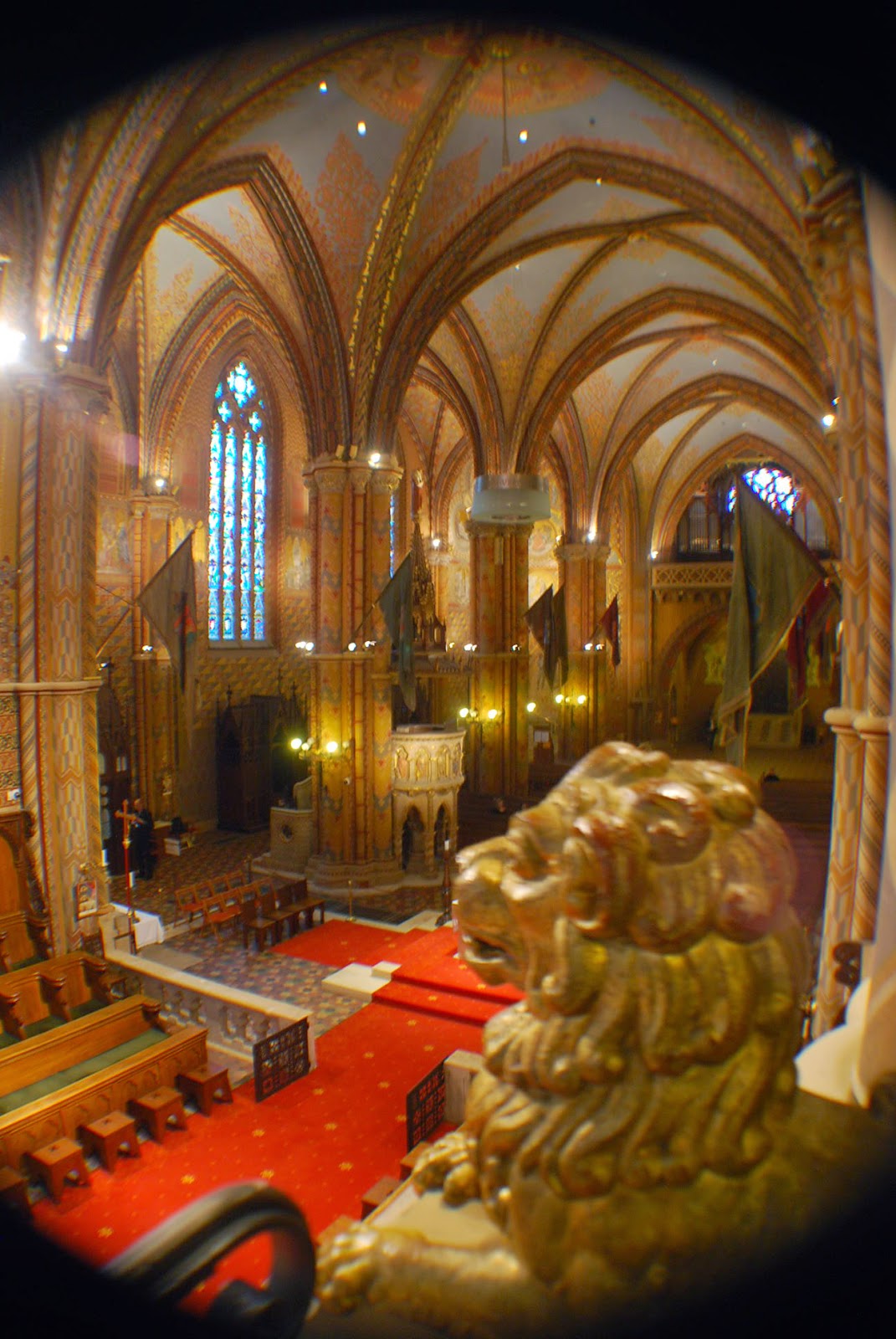Date of visit: 10th April 2014
The sky was cloudy when the metro bus that we ride crosses the Castle Bridge up to the Castle Hill. By the time we get down at the corner of the Matthias Church, rain started to pour though not that heavy. After saying my farewell to the 94 year old gentleman who has given us a valuable advice about the Buda Castle and other attractions of the city, we rushed to Matthias church to hide our selves from the rain. After a while, we decided to pay some nominal entrance fee from the ticketing counter seated accross the church and went inside for a small adventure. It was a right choice as what we saw inside were all indeed so, so beautiful.
The Hungarian pronounced it as “Matyas
templom”. Matthias Church is a Roman Catholic church located in Castle Hill,
the old city called “Buda” in Budapest. It is located in front of the
Fisherman's Bastion at the heart of Buda's Castle District. According to church
tradition, it was originally built in Romanesque style in 1015. The current
building was constructed in the florid late Gothic style in the second half of
the 14th century and was extensively restored in the late 19th century. It was
the second largest church of medieval Buda and the seventh largest church of medieval
Hungarian Kingdom.
Matthias Church was officially
named as the “Church of Our Lady”. However, it has been more popularly named after King
Matthias, who ordered the transformation of its original southern tower in the
14th century. The church was the scene of several coronations,
including that of Charles IV in 1916 (the last Habsburg king). It was also the
site for King Matthias's 2 weddings (the first to Catherine of Podebrady and,
after her death, to Beatrice of Naples).
During the century and a half of
Turkish occupation, the vast majority of its ecclesiastical treasures were
shipped to Pressburg (present day Bratislava) and following the capture of Buda
in 1541 the church became the city's main mosque. Sultan Sulaiman the
magnificent has brought back quite a number of the treasures apart from the
content of the Castle’s library to Istanbul during the siege. Ornate frescoes that previously adorned the
walls of the building were whitewashed and interior furnishings stripped out.
The church was also a place of
the so-called “Mary wonder”. In 1686 during the siege of Buda by the Holy
League a wall of the church collapsed due to cannon fire. It turned out that an
old votive Madonna statue was hidden behind the wall. As the sculpture of the
Virgin Mary appeared before the praying Muslims, the morale of the garrison
collapsed and the city fell on the same day.
Following Turkish expulsion in
1686, an attempt was made to restore the church in the Baroque style. Historical
evidence shows that the work was largely unsatisfactory. It was not until the
great architectural boom towards the end of the 19th century that the building
regained much of its former splendour. The architect responsible for this work
was Frigyes Schulek.
The church was restored to its
original 13th century plan but a number of early original Gothic elements were
uncovered. By also adding new motifs of his own (such as the diamond pattern
roof tiles and gargoyles laden spire) Schulek ensured that the work, when
finished, would be highly controversial.
It is now a home to the
Ecclesiastical Art museum which begins in the medieval crypt and leads up to
the St. Stephen Chapel. The gallery contains a number of sacred relics and
medieval stone carvings, along with replicas of the Hungarian royal crown and
coronation jewels.
Remarks: Additional notes regarding the King Matthias @ Matthias
Corvinus (23 February 1443 – 6 April 1490) for my personal reference. He was
called “the Just in folk tales”, was a King of Hungary (as Matthias I) and
Croatia from 1458, when he was 14 years old, until his death when he was just
47. He ruled the country for 33 years and conducted several military campaigns,
making himself also King of Bohemia (1469–90) and Duke of Austria (1486–90).
With his patronage, Hungary became the first European country which adopted the
Renaissance from Italy. As a Renaissance ruler, he established educational
institutions, patronized art and science, and introduced a new legal system in
Hungary. Matthias strongly endeavoured to follow the model and ideas of the
philosopher-king as described in Plato’s Republic.
















No comments:
Post a Comment